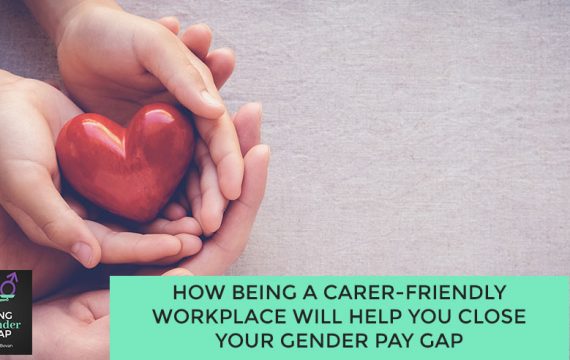2021 was a very challenging year for most of us for various reasons. We all experienced a decline in productivity and anxiety brought by the pandemic. Then, just when we thought it was all over, another surge began. And women at work are going through even more burnouts, stress, and confusion. What will the next year await? In this episode, Sherry Bevan explores the five key trends and insights that will impact the gender pay gap in 2022. This way, we could have a clear view of what we could expect this year and decide on the actionable steps we could take.
—
Listen to the podcast here:
Five Key Trends And Predictions To Close The Gender Pay Gap In The Year 2022
In this episode, I would like to explore some of the key trends and insights on Closing the Gender Pay Gap in 2022 in the technology sector. Before I start talking to you about trends, predictions, and insights, I want to let you know about an exciting round table that I’m organizing on the 24th of March 2022. We are going to be looking at how to attract more women into cybersecurity. There are some topics that we are going to be looking at specifically.
We are going to explore, “Why does cybersecurity need more female talent in the first place? How does it help your productivity? How does it help the quality of the products that you are able to deliver?” We are going to look at ways that organizations can tackle that unconscious bias in hiring. We are going to take some time to explore, “What role does internal mobility play?” We are going to be looking at, “What are some of the specific actions that you can take? What are the specific initiatives that are going to help you close that gender pay gap?”
If you are interested in joining the round table, I do still have a few spaces. I generally have no more than 6 to 8 companies on any round table topic. I organize this about 3 or 4 times a year. If you are interested in getting involved, then please do reach out. The topic for the 24th of March is very much focused on how to attract and retain more female talent in cybersecurity.
Let’s think about the specific topic that we are going to cover in this episode. We are going to be looking at some of the trends and predictions that I foresee for 2022. There is no doubt about it. 2021 was a tough and challenging year. For me, personally, it has been a tough year for various reasons. I had a family bereavement at the start of the year. I was trying to get my stepmother moved into a care home. It was a tough year for my children. One of them was supposed to be at university and ended up doing all of her lectures online.
You need the numbers, but you also need the analysis. You need to understand the narrative and the story behind those numbers.
One of the toughest things about 2021 is that we thought it was all over, and then we looped back around again into that lockdown with the pandemic. However, let’s stay positive for 2022. The sunshine outside my window gives me a good omen for the year. Let’s focus on what we need to do now to close the gender pay gap in the technology and cybersecurity sectors. I’m going to start by sharing a few facts, and then move on to look at some of my trends and predictions of what that’s going to look like in 2022.
Let’s start by looking at some of the facts. Women remain underrepresented in technology and cybersecurity, particularly in those niches that require disruptive skills. It’s things such as cloud computing, engineering, and artificial intelligence. One study suggests that women only make up 25% of the cyber workforce. The gender pay gap reporting regulations require employers in Great Britain with 250 or more employees to publish the overall mean and median pay gaps based on the gross hourly pay for men and women expressed as a percentage. They are also required to report on their mean and median gender bonus gaps.
The other thing that employers are also required to publish as part of their gender pay gap report is the proportion of male and female employees within each quartile of their pay distribution. How many women do you have in the top quartile or the highest-paid section of your workforce? How many women do you have in the second-highest-paid section? You have got quartiles 1 to 4. You are required to report on how many men and women you have in each of those quartiles.
Generally, what we see is that you get this pyramid shape. In the lowest-paid quartile, very often, the proportion of men to women employees is about even. It’s 50/50. Sometimes it’s even slightly higher for female employees. In the next one up, it’s a little less balanced. It may be 60/40. In the next one up, it’s less balanced again may be 70/30. In the top tier, the highest-paid employees, it’s often out of balance. You have got this pyramid effect that gets created.
Employers are also required to report on the proportion of both men and women who have been paid a bonus in the preceding twelve-month period. That gender pay gap data needs to be reported annually. What we see is that, on average, the gender pay gap in technology is around 18%, which means that women are only getting paid 82% of what men on average are getting paid.
What is slightly worrying is that the gender pay gap gets even wider for employees age 40 and above. We can assume that those employees age 40 and above are the ones who are likely to be in your senior roles. Not only is that gender pay gap there because you have got more women in the lower-paid roles and more men in the higher-paid roles, but even at that senior level, there is a gender pay gap between people on the same level getting paid quite different sums.

Hybrid Moves From Concept To Reality
Let’s think about five predictions. I’m going to bring five trends, insights, and predictions for you. The first one doesn’t come as any surprise to anyone who has been living through it since 2020. The hybrid working model is going to move from concept to reality. We have nearly all been working in a hybrid or flexible way. What we want to see and what I expect employers to be doing more is to take that hybrid work model from that concept.
We have ended up doing that forced homework without necessarily having thought about all of the policies and best practices that go along with it. We had to suddenly move one day from working in the office, factory or client sites to working from home. We are moving now from that concept and that put together nuts and bolts to get it moving into reality. Organizations are now doing more work on developing best practices and guidelines. They are making sure that their line managers know how to support their employees in that hybrid world.
What we saw in the 2022 Global Culture Report is that for 64% of workers in the UK, what they have prioritized from their employers is needing clearer guidelines, more clarity about the way that hybrid working is going to work and how it’s going to be implemented, “What does it mean for me as an employee? What does your hybrid working look like?”
Over the last couple of years, we have all introduced hybrid working in many places but perhaps there has been understandably not as much clarity as you would have expected if you implemented that hybrid working from scratch without the pressure of a lockdown and pandemic going on. The UK workers want to see more clarity around the way that hybrid working is implemented.
One of the things that I did in 2021 is I ran a round table on the impact of hybrid working on the gender pay gap. If that’s something that you are looking at doing, getting your hybrid work model black-and-white and creating practices and policies, then check out my white paper on The Impact of the Hybrid Revolution to make sure that you are aware of the potential pitfalls of hybrid working and how that might affect your female talent in a way that’s different to how it affects your male talent.
You get highly motivated employees by creating that positive employee experience.
Moving to that reality and having clarity on the way that’s implemented is going to give you a strong, competitive edge. Particularly, what we are starting to see is salaries are going up because of the Great Resignation and more people are looking to change roles. The clear process and policy around the hybrid work model are going to give you a competitive edge.
Internal Mobility Gives Competitive Advantage
The second insight or trend that I predict over 2022 is that we are going to see more internal mobility. We are going to see employers needing to look inside themselves to find that senior female talent in particular. This is going to give you a competitive retention edge in the market. If you are finding it difficult to recruit good female talent into technology or cybersecurity, look at your current workforce. Look at ways that you can make it easier for people to move sideways inside your organization.
Look at the departments and people that you have. Who could you retrain? Who could you develop the skills more quickly and cost-effectively than buying in that talent from outside? That’s not to say I’m encouraging you to pay people less because they are internal. One of the reasons why people often leave an organization is because they can see that new talent comes in and gets paid at a higher rate. You have got this incredible workforce who already understands your culture, values, policies and best practices.
Look at your internal workforce. “Who could you retrain? Where could you develop skills?” Rethink the career pathway and ladder that are available to your staff. Doing that will help you in many ways. For example, it’s going to increase your retention figures, which means that it’s going to reduce the cost of recruitment. It’s going to accelerate how quickly those new hires become productive because they already know your values and their way around the systems. They already know what learning and development are available. It’s going to increase and speed up how quickly those new hires or internal moves can get productive.
It’s going to reduce the time to recruit, which also means it’s going to reduce the cost of the recruitment process because you do not have to pay for job ads and recruitment agencies. The other fantastic benefit to looking at internal mobility and your current workforce or making it easier to move sideways is it’s going to increase your employee engagement, which means that you are going to build an even stronger employer brand. That in itself will make you more attractive to talent outside.

The third prediction or trend that I have for you is more focused on data-driven decisions. When we are looking at the gender pay gap, very often, what we are doing is we are looking at the numbers. It’s not just about the numbers but it’s also the narrative and story behind those numbers. When I work with clients on helping them to develop their gender pay gap narrative, it’s so important to be open, honest and not try to hide the reasons why your gap is large.
If you have made progress in that gender pay gap to be open and honest about what has helped you to get there, you need the numbers but you also need the analysis. You need to understand the narrative and story behind those numbers. Having that information about the numbers, analysis, and data means you are more likely to put into place the right actions and initiatives that will help you to close that gender pay gap.
For your resources in HR, people or talent management team, you need that data literacy. You need people who can understand and work with data. Very often, what I see when I work in organizations is you have got more data than you know what to do with. It’s important that when you are making decisions on what actions and initiatives to take, you are not just making those decisions based on hunches and intuitions. You need to have that backup of the data as well.
Focus On Data-Driven Decisions
Take a moment now to think about, “How many of the people in your team would you say are data literate? How many of your decisions are based on data? What can you do to change that? What can you do to encourage more of your team to become more data literate? How can you make sure that you base your decisions on data, not just on hunches and intuitions?” That was number four. I can predict in 2022 and I have already seen this from companies that I have been talking to in January. It’s going to be more focused on having data-driven decisions and emphasis on having data-literate staff in your team.
One of the number one causes of burnout at work is feeling that you’ve been unfairly treated.
Positive Employee Experience
The trend that I see coming up is how important it is to create a positive employee experience. Many of us have been going through burnout. There’s a study by Gallup and Forrester Research that shows that employers who provide exceptional employee experiences have highly motivated employees. That’s hardly surprising. It means they have got higher engagement and increased productivity. What that means for your clients and customers is increased customer satisfaction. If your employees love working for you and doing the work that they do, that’s going to shine through into the service and products that your clients and customers receive.
It’s about looking at each stage of that employee life cycle for the whole employee experience. It’s about looking at how you do recruitment and onboarding. Remember, first impressions count. I’m sure, like me, you have seen how willingly new employees will share photos of how they have been welcomed into the organization, particularly while we have been in lockdown. That all helps to create and strengthen your employer brand.
The next stage of that employee life cycle is about career and personal development, “What are you doing to enable and empower people to take responsibility and have accountability for their career development? What are you offering to them?” Over the last couple of years, what has been important is the overall employee well-being. We are looking after the staff that we have so that we are more likely to keep those staff. How you get highly motivated employees is by creating that positive employee experience. I can see that organizations are starting to put more emphasis on creating that experience.
Widening Gender Burnout Gap
The final insight that I would like to share with you is the gender gap in burnout. What we have seen is that the burnout gender pay gap has widened. I predict that we are going to continue to see that gap even larger. Women are more likely than men to feel burned out at work. It’s 34% of women versus 26% of men feel burned out at work. That’s from Gallup’s research. What we see is that since the lockdown and pandemic, the burnout gender gap has more than doubled since 2019.
That’s scary because that’s not right. We can all see that there are lots of different factors involved but it’s worrying that women are experiencing this more than men. What we see from the research is women in non-leadership positions are affected especially. Burnout is common. 1 in 4 men experiences burnout regularly. When you do experience burnout, you are more likely to take time off, take sick leave and quit. There has been a disproportionate increase in burnout among women since the pandemic. There’s no one factor at play here.
When women work remotely in individual contributor roles, they are more likely to experience burnout. If they are working in project manager roles, they are working in isolation almost rather than working in specific leadership roles. What was interesting in looking at the research is that when you look at the difference in burnout by gender among workers in managerial positions, there wasn’t that much difference. Where we see it specifically is for those women who are working in those individual contributor roles.
What can you do? You have got to enable the conversation. You’ve got to make that conversation acceptable and available. Talk about the causes of burnout. Educate your managers so that they have the information and resources, so they know how to get the conversation started and the signs to look out for. It’s important that you measure and track employee well-being.
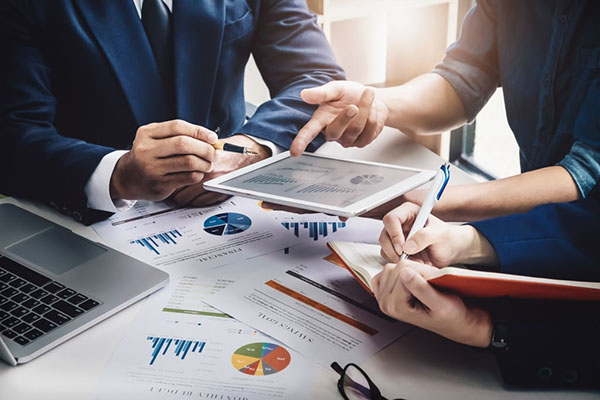
One of the number one causes of burnout at work is feeling that you have been unfairly treated. Your alarm bells should start ringing if your conversations or data uncovers a gender gap in burnout. Give your managers the opportunity to manage the burnout conversation. Make sure they have the information, education, and awareness of the signs of burnout. You are being proactive and prompting those conversations rather than waiting for the person to completely burn out, take time off sick or worst, to quit.
Those are my five trends and predictions for what we are going to see in the technology sector. They are going to influence and impact how quickly we are able to close the gender pay gap. The first one was looking at how we are going to be moving from that hybrid work model concept to the hybrid reality. Employees will need more clarity on your practices and policies because that’s what employees feel is missing for them. If you focus on internal mobility, make it easier for people to make a sideways move. That is going to give you a competitive retention edge.
I can predict that we are going to see more focus on data-driven decisions, which means that you are going to need to make sure that your people in your team have that data literacy so that you are making decisions based on data, not just based on hunches and intuitions. If you want a productive and highly engaged staff, it’s all about creating that positive employee experience. I can see employers being able to go back to focusing on doing that. Finally, the last thing is about keeping an eye on that gender gap in burnout because that has widened over the last couple of years. I would hate to see that widen even further.
I would love to hear your thoughts on these key insights and trends in closing the gender pay gap. Now that you have read this, what are the things that you and your organization need to do? What do you need to change to get different results? What do you need to commit to achieving those results? If you want to talk through any of the trends and insights that I have talked about, and if you would like to have an opportunity to talk through with an external objective consultant, then please feel free to give me a call or get in touch with me by email at Sherry@SherryBevan.co.uk.
If you are interested in that round table on attracting more female talent into cybersecurity, then please do get in touch. The round table takes place on the 24th of March 2022. I still have a few spaces left on that. If this conversation sparked a thought in your mind, let’s talk. An exploratory call with me will give you the opportunity to ask any questions you have about the work that I do. For me to share key insights and trends that I’m seeing from other organizations that I work with that want to do more to attract, develop and retain female talent, which means that you start to close that gender pay gap. I would love to hear from you. I will be back next time. Thank you.
Important Links:
- Sherry@SherryBevan.co.uk
- https://www.ISC2.org//-/media/ISC2/Research/2021/ISC2-Cybersecurity-Workforce-Study-2021.ashx
- https://www.ONS.gov.uk/employmentandlabourarket/peoplein
- https://www.TheHRDirector.com/business-news/jobseekers/uk-job-seekers-demands-are-revealed-in-2022-global-culture-report/
- http://www.SherryBevan.co.uk/whitepaper-request/
- https://www.Gallup.com/Workplace/358349/gender-gap-worker-burnout-widened-amid-pandemic.aspx

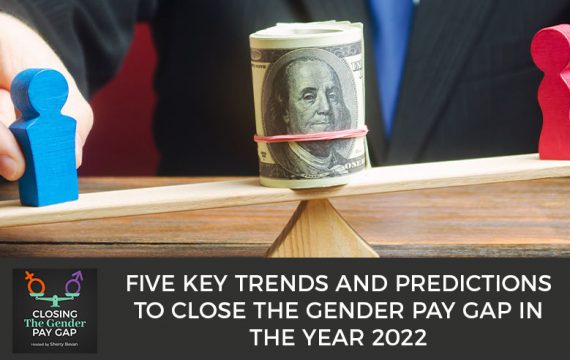
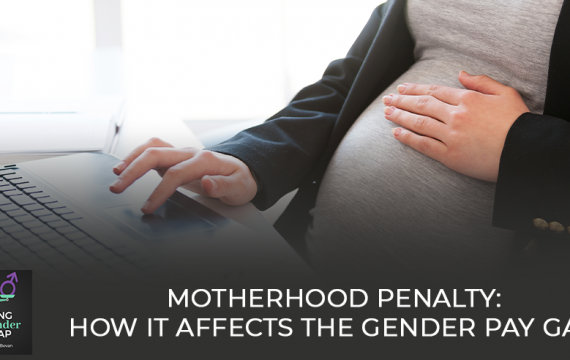







 Rachel is Head of Digital Transformation at Fujitsu.
Rachel is Head of Digital Transformation at Fujitsu.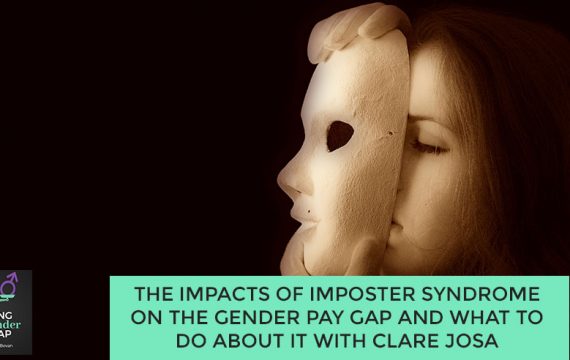


 Clare Josa is the UK’s leading authority on Imposter Syndrome, the author of eight books, and an expert in the neuroscience and psychology of performance.
Clare Josa is the UK’s leading authority on Imposter Syndrome, the author of eight books, and an expert in the neuroscience and psychology of performance.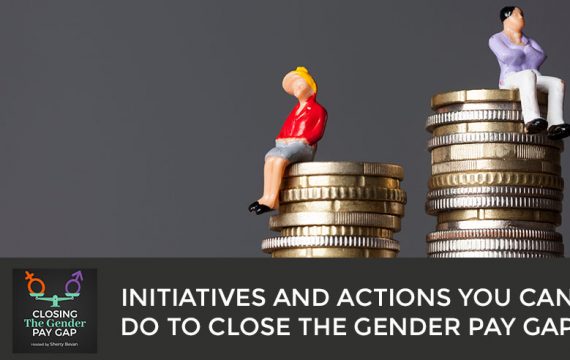



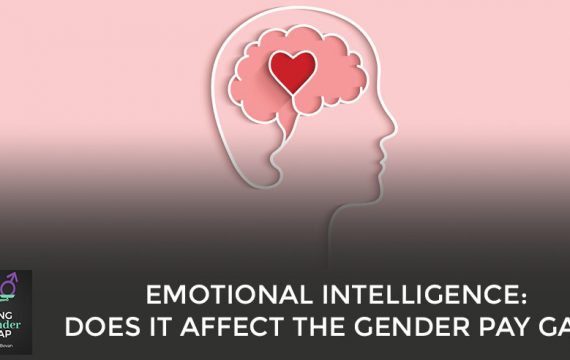





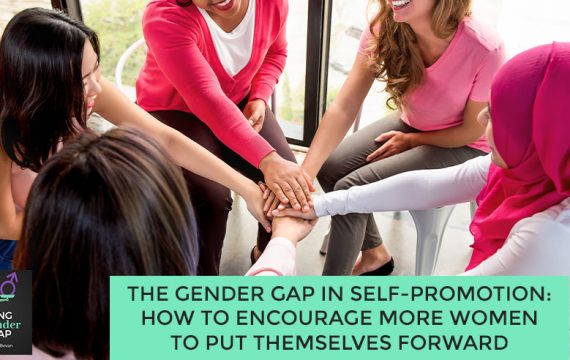



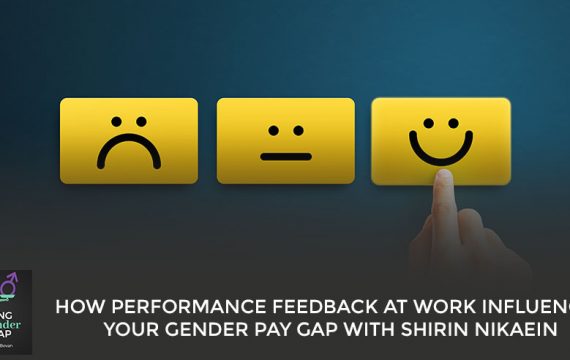



 Shirin Nikaein is the Co-Founder & CEO of
Shirin Nikaein is the Co-Founder & CEO of 



